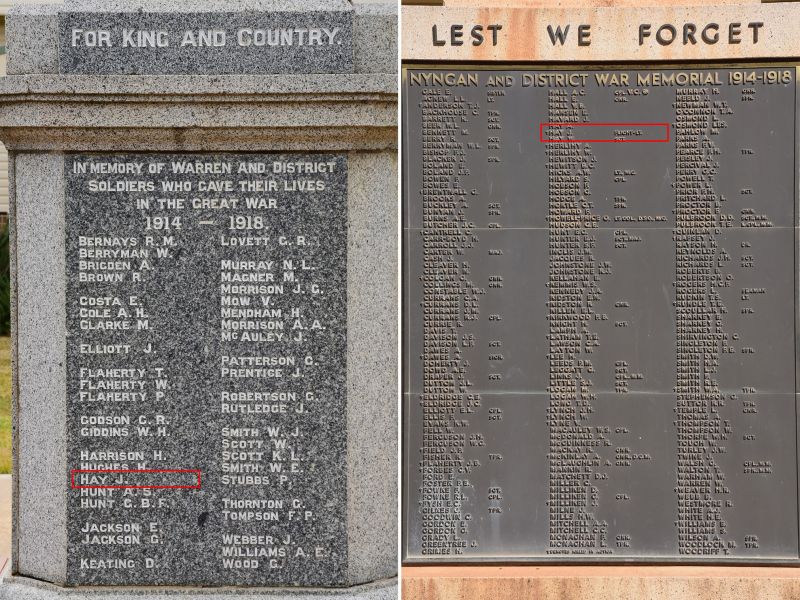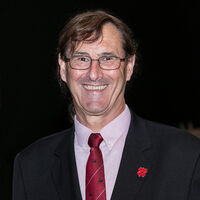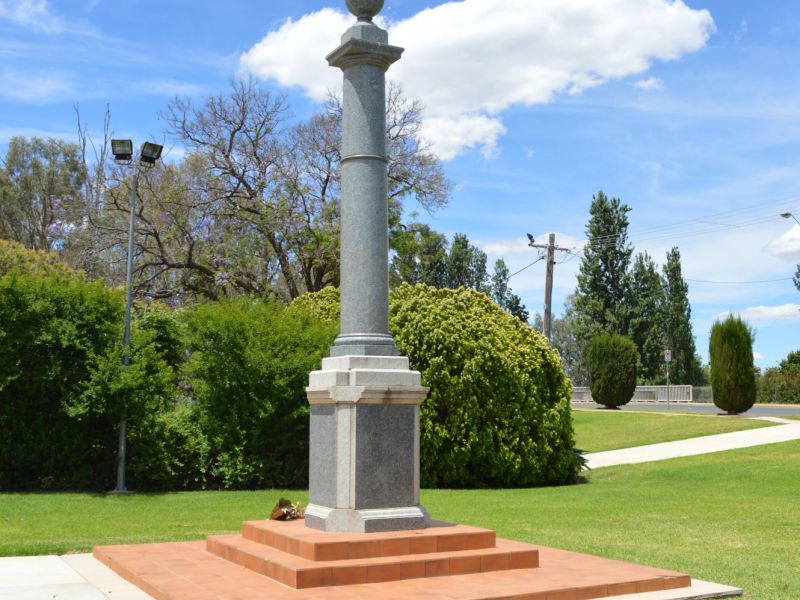"The earth holds not a braver gentleman"
In the 1918 gallery, in the First World War section of the Australian War Memorial, there is a small display dedicated to relics that relate to an Imperial German air ace. Baron Manfred von Richthofen, more commonly known as the ‘Red Baron’. The Imperial German cross was cut from the fuselage of his aircraft after he was shot down and killed on the 21st of April 1918, near Corbie in France. The street sign in German honours von Richthofen and there’s even a small identity disk in the shape of Australia that an Australia soldier had made for himself from aluminium he’d salvaged from von Richthofen’s crashed aircraft.
There is at the AWM though, another link to the Red Baron. It can be found in the Commemorative Area. The Commemorative Roll is in the alcove at the southern end of the eastern cloister. Within that Roll is the name of John ‘Jack’ Hay, recorded as serving with 40 Squadron of the British Royal Flying Corps. The entry indicates that Second Lieutenant John Hay died on the 23rd of January 1917. What that entry doesn't say is that he died in aerial combat in the skies over France. The former grazier from NSW became von Richthofen’s 17th victim.
John Hay, usually known as Jack, was born at Double Bay, New South Wales in January 1889 and was educated at Shore, Sydney Church of England Grammar School. He was working as a grazier in the Gunningbar area of NSW when the First World War began. Hay travelled to England where he undertook flying training and gained his Royal Aero Club Aviators Certificate in June 1916, after which he enlisted in the Royal Flying Corps (RFC). In August 1916 he travelled to France with 40 Squadron RFC. The squadron was equipped with FE 8 pusher biplanes which were found to be no match for the German fighters they had to face.
On the 23rd of January 1917, the day after his 28th birthday, Jack shot down two German aircraft when flying as escort to a photographic reconnaissance mission, before encountering the famous German ace flying in a red Albatros DIII, at the head of his fighter squadron, Jagdstaffel (Jasta) 11. During the battle Hay's aircraft caught fire after being attacked by von Richthofen. Witnesses reported that he jumped from the aircraft rather than be burnt alive. British pilots were not issued with parachutes, and it was not unusual for pilots to leap to a quick death rather than burn in the highly combustible aircraft. Hay's body was recovered by Canadian troops and buried at Aire communal cemetery near the squadron's base in France.
John Hay was the only Australian of the Red Baron's eighty victims. His name is found on two war memorials in NSW, listed on the Warren War Memorial under those who died during the First World War, and on the panels of the Nyngan Cenotaph.
The original brass marker on his grave stated, "The earth holds not a braver gentleman".
- Australian War Memorial website https://www.awm.gov.au/collection/R1430000
- Imperial War Museums website https://livesofthefirstworldwar.iwm.org.uk/story/66185

 Henry C Moulds
Henry C Moulds